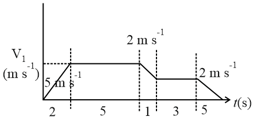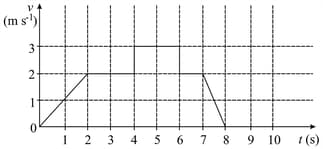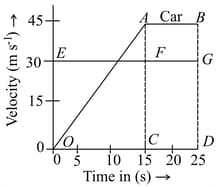MEDIUM
NEET
IMPORTANT
Earn 100
A passenger train of length travels at a speed of . Another freight train of length travels at a speed of . The ratio of times taken by the passenger train to completely cross the freight train when: (i) they are moving in the same direction, and (ii) in the opposite directions is:
(a)
(b)
(c)
(d)
50% studentsanswered this correctly

Important Questions on Kinematics
EASY
NEET
IMPORTANT
EASY
NEET
IMPORTANT
EASY
NEET
IMPORTANT
EASY
NEET
IMPORTANT
A fly is in rectilinear motion as described by the graph. The average speed of the fly is

MEDIUM
NEET
IMPORTANT
MEDIUM
NEET
IMPORTANT
A particle starts from the origin at time and moves along the positive axis. The graph of velocity with respect to time is shown in figure. What is the position of the particle at time

MEDIUM
NEET
IMPORTANT
The velocity time graphs of a car and a scooter are shown in the figure. (i) The difference between the distance travelled by the car and the scooter in 15 s and (ii) the time at which the car will catch up with the scooter are, respectively.

MEDIUM
NEET
IMPORTANT
